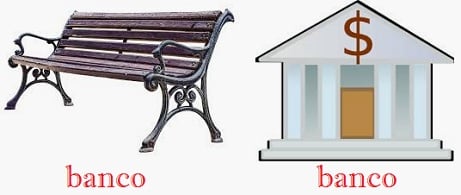 The term homograph is used in the field of linguistics to refer to a word that is written in the same way as another . This means that homograph concepts have identical spelling .
The term homograph is used in the field of linguistics to refer to a word that is written in the same way as another . This means that homograph concepts have identical spelling .
Homography implies that words that have different meanings are spelled the same . There is, therefore, an orthographic coincidence between the homographs.
It can be said that homography constitutes a specific case of homonymy . Homonyms are pronounced the same way , but they have different meanings. Homographs, in particular, are spelled the same. While in Spanish homographs are always homonyms, in other languages (such as English) there are concepts that are homographs but not homonyms: they are written the same and pronounced differently.
Let's take the case of bank . This notion can refer to a seat (the bench to sit on) or to a financial entity (the bank to deposit money, request a loan, etc.). As you can see, bank (seat) and bank (financial entity) are homographs: both terms are written with the same five letters and in the same order ( bank ). Because there is no distinction in pronunciation, they are also homonyms.
Cholera , on the other hand, can refer to anger ( “The singer burst into anger in front of reporters” ) or an infectious disease ( “The cholera outbreak left ten dead in the south of the country” ). Both words are homographs and homonymous: they are written the same and pronounced the same, but they have different meanings. To distinguish them and understand what they refer to, it is necessary to analyze the context in which they appear.
From this duo we can study a very interesting aspect that does not usually take place in the homographs of our language: one is masculine, and the other is feminine. According to the dictionary of the Royal Spanish Academy, if we want to use the meaning that is defined as anger or anger , the noun cholera is feminine, while for the meaning of the epidemic disease, it is masculine.
 Needless to say, in everyday speech these issues are too detailed and are not always respected. In fact, not even nouns that do not have homographs are used correctly one hundred percent of the time: the case of pan , which despite being feminine many people use as masculine, is an example of the most common, along with with salt , which suffers the same error. In short, you should say "the frying pan" and "the salt."
Needless to say, in everyday speech these issues are too detailed and are not always respected. In fact, not even nouns that do not have homographs are used correctly one hundred percent of the time: the case of pan , which despite being feminine many people use as masculine, is an example of the most common, along with with salt , which suffers the same error. In short, you should say "the frying pan" and "the salt."
Since we are talking about this substance that is so common in the home and industry, which allows us to enhance the flavor of foods and preserve raw materials, among other things, we can point out a couple in which this term is a homograph: the other It is the verb to leave conjugated in the second person singular of the imperative . Therefore, although they are written and pronounced the same way, their meanings are very different.
Let's look at two sentences to exemplify this case of homographs: "The food is delicious, but for my taste it lacks a bit of salt," "Look, get out of here, I don't want to see you again in my life!" . Similarly, the word mira in this case is the verb mira also conjugated in the imperative mood, while the noun mira , its homograph, can be defined as a piece for directing the eye on some instruments .
As can be seen, homographs do not usually give rise to confusion since they are generally used in very different contexts : talking about the taste of a dish of food has nothing in common with a discussion in which the sender asks his interlocutor to leave. However, in the field of comedy this peculiarity can be used to generate funny, although unrealistic, situations.
